Day 2 :
Keynote Forum
Rupa Rajbhandari Singh
Rupa Rajbhandari Singh is Professor& Chair, DM Neonatology Head, at B. P. Koirala Institute of Health Sciences, Nepal
Keynote: Professor
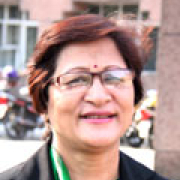
Biography:
Rupa Rajbhandari Singh is Professor& Chair, DM Neonatology Head, at B. P. Koirala Institute of Health Sciences, Nepal
Abstract:
Abstract
Background: In full term pregnancy, birth weight is greatly influenced by the fetal growth, which is closely linked to nutritional status and BMI of mother during the pregnancy.
Objectives: To study the impact of maternal BMI on neonatal outcome and its association with neonate needs for NICU admission and care at BPKIHS.
Methods: It is a hospital-based cross-sectional descriptive study conducted over a period of one year at BPKIHS, Dharan. Ethical clearance was obtained from IERB, BPKIHS. (1) Sample size: 500, (2) Baseline maternal and neonatal data recorded according to the proforma, (3) BMI calculated according to WHO guidelines and (4) Ethical clearance was obtained from IERB, BPKIHS.
Statistical Analysis: For inferential statistics Chi-square test and Pearson coefficient was used. Correlations done to study the significant difference between maternal BMI and related variables of neonatal outcome at 95% CI where p=0.05 was taken as significant.
Results: Out of 500 pregnant mothers, 52.2% were primigravida with mean age 25 years and 94.8% had weight >60 kg and mean height of 155 cm. The mean BMI during pregnancy was 24.22. Maximum new born (73.4%) were delivered by NVD. 53% were female new born. Mean birth weight and length were 3190 gm and 51 cm, respectively. Mean head circumference was 34.37 cm. Total preterm delivery was 10.4%. Ponderal index of 2.6% was <2 while 1.4% had PI>2. AGA newborns were 93.6%. Neonates requiring NICU admission and care were only 4.8%. Significant correlation was found between the maternal BMI and birth weight.
Conclusion: This study showed the impact of regular ANC checkups on neonatal outcome and significant effect of maternal BMI on neonatal anthropometry and mode of delivery.
- General Pediatrics
Location: JW Marriott Dubai
Session Introduction
Cherry Marris O. Dulay-Villa
Pediatric consultant
Title: Patterns of weekly consumption of sugar sweetened beverages among high school students in Makati City, Philippines

Biography:
Dr. Cherry Marris O. Dulay-Villa finished her bachelor’s degree and medical school at the University of Santo Tomas, Manila Philippines in 2011. She is a licensed medical technologist since 2008 and physician since 2012 in the Philippines. She had 3-year residency training for general pediatrics at Makati Medical Center and finished the program last January 2016. She managed to be a part-time school physician, junior pediatric consultant, and telemedicine consultant simultaneously before she moved in Dubai, United Arab of Emirates and got her Dubai Health Authority license as general physician in 2017.
Abstract:
Adolescence is a nutritionally susceptible period due to increased energy requirements. Increasing obesity prevalence among children and adolescents has been linked to excess caloric intake due to sugar sweetened beverage (SSB) consumption. The study determined patterns of weekly sugar consumption from SSB among Filipino adolescents in a highly urbanized school setting. 170 students aged 14 to 16 were surveyed and measured their SSB consumption using a daily beverage diary and 24 hour beverage recall, on two weekdays and one day during the weekend. The prevalence of overweight and obesity was 15.9% and 11.2%. The most commonly consumed SSB types were iced tea (36.31%) on weekdays, and fruit juice (29.05%) on weekends. By volume, the most highly consumed per serving were sports drinks (median 600 ml) on weekdays and milk tea on weekends (median 480 ml). The most commonly consumed drinks was iced tea either alone or with friends, and chocolate drinks when with family. The average sugar consumed from SSB alone was 38.75 grams/day on weekdays and 36 grams/day on weekends. We found insufficient evidence to demonstrate a difference in the weekly average of sugar from SSBs in kcal between overweight and obese students compared to those with normal or low BMI (p = 0.3346). The adolescents’ daily average sugar intake from sugar sweetened beverages alone, notwithstanding diet, nearly exceeds the maximum daily recommended energy and nutrient intake from simple sugars.

Biography:
Amanda Jansen van Rensburg is a Registered Dietitian, completed her Bachelor of Dietetics degree at the University of Pretoria, South Africa in 2014. She is currently enrolled for a full-time Master’s degree in Dietetics. She is an ambitious health care professional with strong leadership and relationship-building skills. She has a special interest in pediatric nutrition.
Abstract:
absorptiometry (DXA) are accurate, precise and suitable for children. They are however, costly, technically challenging, time-consuming and not always readily available. Bioelectrical impedance analysis (BIA) is a convenient alternative. The Seca medical body composition analyzer (mBCA) 515/514 has not yet been validated for prediction of body composition in children. The objective of the study was to determine the agreement between fat-free mass (FFM), measured by DXA and calculated from multifrequency bioelectrical impedance using published prediction equations, in pre-adolescent children. Data were collected by means of a cross-sectional study on 83 conveniently sampled African children (44 girls, 39 boys; mean (SD) age 8.5 (1.4) years). Standing height was measured with a Seca 274 stadiometer and body weight using the seca mBCA 515/514. Body composition was measured with the mBCA 515/514 and whole-body DXA scans. Differences between measured and calculated FFM were tested for significance by paired sample t-tests. Agreement between FFM from the reference method and the individual equations was explored using the Bland-Altman method and the intra-class correlation coefficients. Statistically significant differences (p<0.05) between calculated and measured FFM were observed in all but three equations. Acceptable limits of agreement were identified in two of these equations. For these equations, the Bland-Altman analysis showed a mean difference close to zero of 0.15 (-2.683; 2.374) and 0.01 (-2.681 ; 2.663). These two equations can be used to calculate FFM in this specific population using impedance values from the Seca mBCA 515/514.
Abate Yeshidinber
Saint Paul’s hospital millennium medical college, Ethiopia
Title: Antibiotic prescribing practice in the management of cough or diarrhea among children attending hospitals of Addis Ababa: A cross sectional prospective study
Biography:
Abate Yeshidinber is Pediatrician and Assistance professor at Saint Paul Hospital Milinnium Medical College, Ethipoia.
Abstract:
Background & Aim: The irrational use of antibiotics is already a global problem. Not following clinical guidelines while prescribing is one of the main reasons for irrational use of antibiotics. Cough and/or diarrhea are the main childhood illnesses in Ethiopia and health care providers are expected to follow the available national guidelines while managing these illnesses. This study aimed to assess the extent of adherence to the guidelines by health care providers while managing cases of childhood diarrhea and/or cough in hospitals of Addis Ababa.
Methods: The study was conducted in three public and 20 private-for-profit hospitals in Addis Ababa which are providing pediatrics clinical service in the city. A total of 1073 children age 2 month to 59 months were included in the study. Sample size was determined based on the prevalence of inappropriate antibiotics prescription in a similar setting. Equal numbers of cases were allocated to each hospital and consecutive cases were included in the study until sample size was attained from each hospital. The data collectors approached the cases after the cases were seen by the health care provider. Data were collected prospectively from April to June 2016 using a structured pretested questionnaire. SPSS for windows version 20 was used to analyze the data.
Result: Of the total, 936 (87.2%) children were seen at private for profit hospitals and the rest at public hospitals. 571 (53.2%) of them were male. Out of the total, 490 (45.7%) attendants claimed that the reason for visiting a hospital was diarrhea and 653 (60.9%) attendants said cough was the reason for visiting a hospital. Only 72 (6.7%) attendants claimed the reason for bringing their child to hospital was because the child had both cough and diarrhea. Antibiotic was prescribed for 794 (74.0%) children and the rest were sent home with either simple advice or cough syrup or analgesics. Co-trimoxazole 209 (26.3%), amoxicillin 185 (23.3%) and cephalosporins 174 (21.9%) were the three antibiotics commonly prescribed. Of those children for whom antibiotics was prescribed, 688 (86.6%) of the prescription were inappropriate. Prescribing antibiotics when not necessary 631 (91.7%) and prescribing the wrong spectrum of antibiotics 57 (8.3%) were the two main reasons to say the prescriptions were inappropriate. Under multivariate analysis, child not having diarrhea were independently associated with appropriate antibiotic prescription (AOR=0.261, 95% CI: 0.095-0.714) while prescriber qualified as a pediatrician was an independent predictor of inappropriate antibiotic prescription (AOR=9.967, 95% CI: 4.221-23.532).
Conclusion: The magnitude of inappropriate antibiotic prescription in managing cough and/or diarrhea in our setting was high. Factors which contribute to inappropriate use of antibiotics among the health care providers have to be addressed by the responsible body in order to prevent emergence of antibiotic resistant micro-organisms.
Jennifer Tavares-Kitchen & Kelsey Seaborg
Jennifer Tavares-Kitchen, Advocate Children’s Hospital-Oak Lawn Campus Kelsey Seaborg, Advocate Children's Hospital in Oak Lawn Campus
Title: Prevention of diagnostic errors: Behavioral determinants of the health care team
Biography:
Jennifer Tavares-Kitchen is the Manager of Clinical Operations of General Pediatrics, Advocate Children’s Hospital-Oak Lawn Campus. She has completed her Bachelor of Science at Lewis University in Romeoville, Illinois. She has recently completed her MBA and MSN dual degrees at Lewis University in Romeoville, Illinois. She is currently enrolled in the DNP program at Lewis University in Romeoville, Illinois.
Kelsey is a Registered Nurse at Advocate Children's Hospital in Oak Lawn, IL. She works on a cardiac medical/surgical inpatient unit, where she has been working as a staff nurse for 6 years. Kelsey received her Bachelor of Science in Nursing from Illinois Wesleyan University in Bloomington, IL. She serves as the Unit Council Chair for her unit, as well as the Shared Governance General Pediatrics Co-Chair. Kelsey is a safety coach, a clinical coach, and part of the Advocate Nurse Career Advancement Program.
Abstract:
Introduction: The implementation of patient safety initiatives that focus on the prevention of process-driven medical errors has been very successful in reducing hospital acquired infections and medication and surgical errors. Cognitive errors, however, that results in delayed, missed or wrong diagnosis (many of which result in serious harm and huge financial penalties) continue to persist. They are rarely reported or addressed and no hospital in the USA is counting diagnostic errors, despite the fact that they are more critical in determining outcomes than any other type of error. Exact causes and intervention strategies continue to be elusive. Various theories have been proposed and several contributory factors have been identified, but the debate on a precise and preventative model continues with no consensus. Most of the published literature relies on retrospective analysis and autopsy findings of such errors. We have decided to launch a prospective study to identify diagnostic errors in real time and to analyze the causes and the elements required to develop a standardized and effective model of prevention.
Materials & Methods: The study started in March 2017 and is ongoing. In the first phase of our study, we decided to analyze how the patient care delivery model functions on the inpatient units. We utilize the Family Centered Patient Rounds model. The team is headed by a faculty member (hospitalist) in addition to the nurses and trainees (residents and medical students). We focused on the medical-surgical floors and did not include the critical care units. Medical students were assigned to observe the function of the team for the full duration of the 12-hour shifts and completed these observations for 15 shifts covering the morning, evening and weekend shifts on two separate units. The observation parameters included the frequency and length of time each of the team members spent on bedside care, medication delivery, utilization of the Electronic Medical Record (EMR) and supervision of care. We also defined what constitutes a medical error and requested voluntary counting and reporting of such errors as they occur. The observational periods for the nursing staff were completed. The observational periods for the rest of the team members are still ongoing. The shortest and longest time periods a nurse spent in completing their assignments were recorded and the medians were calculated.
Results & Conclusion: Nurses spent, on average, about 15 minutes at the bedside, five minutes on administering medications, 45 minutes on the EMR per patient per 12-hour shift and 150 minutes participating in the Family Centered Rounds and signing off on their patients. This is approximately four hours out of a 12-hour shift, the rest of which is spent on activities related to the patient, but not direct care. Initial observations for the rest of the team members indicate that time availability and direct supervision of the trainees by senior physicians could be improved. These results suggest that essential elements of a model to prevent diagnostic errors, such as frequent and regular assessment of a patient’s condition and progress after admission, monitoring and accurately interpreting or requesting further diagnostics, may have been compromised. It is difficult not to conclude that the first step in developing a model to prevent diagnostic errors ought to be modifying how members of the health care team function on the inpatient units. A special task force has been formed to investigate this issue and make recommendations.
- Pediatric Critical care, Emergency medicine
Session Introduction
Rana Sharara-Chami
American University of Beirut Medical center
Title: In-situ Simulation for Latent Threat Identification in the Emergency Department (ED)

Biography:
Rana Sharara-Chami has completed her MD at the American University of Beirut and residency in Pediatrics and fellowship in Pediatric Critical Care from North Carolina Children’s Hospital and Boston Children’s Hospital, Harvard Medical School respectively. She is now an assistant professor at the American University of Beirut Medical center, associate program director and simulation program director. Her research interest is in Education in general and in simulation in particular.
Abstract:
The ED is a popular site for in-situ simulation. Under stress medical professionals can deviate from clinical guidelines and policies even if they know of their existence. The objectives of the study are (1) to evaluate the effects of in-situ simulation in identifying knowledge/application gaps related to established protocols in the ED at AUBMC and, (2) the effects of in-situ simulation on adherence to protocols and improved teamwork by avoidance of latent threats. Validated crisis resource management (CRM) criteria will be measured via the validated Anesthetists Non-Technical Skills scale (ANTS)5. A needs assessment survey in the ED showed that most participants were familiar with high-fidelity simulation (55%), and want it in the curriculum especially in-situ (68%). There was a perceived knowledge gap across all participants in communication skills (p 0.000) and dealing with difficult families (p 0.003). 55% of participants were aware of the existence of ED protocols, but 7% complied. We propose using in-situ simulation in the ED on a bi-monthly basis to identify latent threats related to failed adherence to guidelines and system errors. We will choose well-known protocols and run an announced simulation scenario in the ED followed by debriefing. Behavioral patterns will be recorded and participants will complete post-simulation surveys. 2 weeks later, the same scenario will be repeated unannounced with the same participants. Behaviors will be compared to the first announced scenario on the same scale (ANTS). We expect significant improvement in adherence to protocols and behavioral changes resulting in better teamwork.
- Pediatric Neurology
Session Introduction
Zahra Al Asiri
Senior Physical Therapist and Supervisor at Prince Sultan Military Medical City
Title: Body mass index and health related physical fitness in Saudi girls and adolescents aged 8-15 years
Biography:
Zahra Al Asiri has completed his MSc from King Saud University and he has been working for more than 13 years as a Senior Physical Therapist and Supervisor at Prince Sultan Military Medical City and KAAUH. He has published paper about body mass index and health related physical fitness in Saudi girls and adolescents aged 8-15 years and currently working on 2 papers about cerebral palsy.
Abstract:
Statement of Problem: Health related physical fitness (HRPF) is considered to be an indirect marker of a person’s health and wellbeing, reflecting the interplay and integration of many persons’ systems and body functions.
Purpose: To investigate the relationship between body mass index (BMI) and HRPF in a national cross-sectional sample of Saudi girls and adolescents.
Methods: Weight, height and four components of HRPF (body fat composition, strength and endurance, flexibility and cardio respiratory fitness) were measured in three age groups [(8-10), (11-12) and (13-15) years]. Pearson correlation coefficient and regressions analysis using a non-linear quadratic model were used to evaluate the relationship between BMI and HRPF in three age groups.
Results: The results revealed variable relationships among tests. Lower scores in body fat composition and cardio-respiratory fitness were associated with higher body mass indexes in each age group. Also lower scores in muscle strength and endurance were recorded in girls aged from 11 to 15 years. Relationships between BMI and flexibility differed among age groups.
Conclusion: BMI significantly and differentially influenced individual HRPF, but effects varied with age. Higher body mass indexes were generally associated with lower HRPF. The level of HRPF determined by this study may serve as an indicator of potential health risks that overweight and obese children girls and adolescents faced.
- Neonatology
Session Introduction
Olfat Nasser Alzaab
Ministry of Health and Prevention, UAE
Title: Newborn demographic distribution in the Northern United Arab Emirates
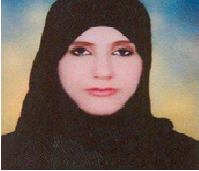
Biography:
Olfat Nasser Alzaabi is a Pediatric Consultant and Head of Pediatric Department at Fujairah Hospital. She has completed her MBBS from Dubai Medical College for Girls in 2003. She was trained at UAE University, Faculty of Medicine and Health Sciences and has completed her Pediatric Arab Board Residency in 2011. She is a Member of Royal College of Pediatric and Child Health since 2013. She is Faculty at RAK Medical College and was recently appointed as the Director of Pediatric Arab Board Residency Program at Fujairah Hospital. Beside her clinical interest in neonatology and management of extreme preterm babies, she is passionate about pediatric cardiology.
Abstract:
Collection of birth and population information is essential to providing vital statistics data for national use. The purpose of this study is to report statistics on the distribution of the newborn population in the United Arab Emirates, specifically in the Northern Emirates of Sharjah and Fujairah. We collected demographic information from 1059 random subjects born between October 2015 and March 2017 at Al Qassimi Hospital in Sharjah (630 newborns) and Fujairah Hospital (429 newborns), in the network of the United Arab Emirates Ministry of Health and Prevention. The gender distribution of the newborns was 532 females (50.24%) and 527 males (49.76%). This distribution differed between the hospitals with 47.94% females and 52.06% males at Al Qassimi and 53.61% females and 46.39% males at Fujairah. The average gestational age at birth was 38.29±1.84 weeks (38.51±1.25 weeks at Al Qassimi, 37.98±2.42 weeks at Fujairah). The ethnic distribution of the newborns was 57.88% Middle Eastern (39.05% at Al Qassimi, 85.55% at Fujairah), 16.34% South Asian (26.03% at Al Qassimi, 2.10% at Fujairah), 7.27% Asian-other than South Asian (7.62% at Al Qassimi, 6.76% at Fujairah), 3.68% African-other than North African (4.76% at Al Qassimi, 2.10% at Fujairah), 3.12% North African (4.92% at Al Qassimi, 0.47% at Fujairah), 0.28% Caucasian (0.48% at Al Qassimi, 0% at Fujairah) and 11.43% with mixed ethnicity (17.14% at Al Qassimi, 3.03% at Fujairah).
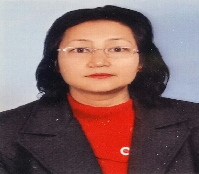
Biography:
Srijana Dangol Singh is currently working as an Associate Professor at Kathmandu University Hospital, Nepal.
Abstract:
Background & Aim: Although recent reports suggest that the use of probiotics may enhance intestinal functions in premature infants, the mechanisms are unclear and open questions remain regarding the safety and its efficacy. The objective of this study is to evaluate the efficacy of probiotics on prevention of necrotizing enterocolitis in preterm infants.
Methods: We conducted a randomized, double blind, placebo controlled (1:1) study of 72 hospitalized preterm infants from March 2013 to August 2015 at Neonatal Intensive Care Unit of Dhulikhel Hospital, Kathmandu University Hospital. They were randomly allocated to receive probiotics (Lactobacillus rhamnosus 35) at a dose of 0.8 mg in infants >1500 gms and 0.4 mg in infants <1500 gms in 2 ml of expressed breast milk two times daily or the same amount of expressed breast mild as placebo (without probiotics). Data analysis was performed in SPSS using the chi-square test, independent T-test and Fisher’s exact test and a p value<0.05 was considered as significant. Ethical clearance was obtained from the Institutional Review Committee of Kathmandu University School of Medical Science and also from Nepal Health Research Council.
Result: 72 patients were studied. The probiotics group (n=37) and placebo group (n=35) showed similar clinical characteristics. Although necrotizing enterocolitis (16.2% vs. 28.6%) was found less frequent in the probiotics group compared to the control group, this difference was not significant (p=0.16). Among the risk factors for necrotizing enterocolitis, pregnancy risk factors and perinatal risk factors were not significant. However neonatal risk factors were more frequent in the probiotic group (59.3%, n=32) than in the placebo group (40.7%, n=22), the difference was significant (p=0.02).
Conclusion: Probiotics administration might not be sufficient to decrease the risk for necrotizing enterocolitis especially in low birth weight infants. NEC is multifactorial and depends on multiple risk factors as well.
- Child Abuse and Neglect
Session Introduction
Domagoj Stimac
Deputy Director of the Child and Youth Protection Center of Zagreb.
Title: Hidden dangers of disclosure: The importance of child friendly approach in protecting sexually abused children

Biography:
Domagoj Stimac is a Psychiatrist with a Subspecialty Certification in Child and Adolescent Psychiatry and Forensic Psychiatry, working as Deputy Director of the Child and Youth Protection Center of Zagreb. He is a Court Expert for Psychiatry, dedicated to sharing his knowledge and experience by teaching child and adolescent forensic psychology at the University of Osijek. He has published numerous academic and professional papers in the field of abuse and neglect of children and was awarded for his accomplishments. He is continuously involved in trainings focused on advances in clinical and forensic work with traumatized children and youth.Deputy Director of the Child and Youth Protection Center of Zagreb
Abstract:
Available data suggests that about one in five children in Europe is a victim of some form of sexual abuse. The disclosure of child sexual abuse is essential for the long term outcomes, as it enables us to protect the child from further victimization and provide needed support in order to reduce the impact of trauma. Literature suggests that in most cases the abuse is never uncovered, the disclosure is often indirect and delayed and that a significant number of children will at some point deny the disclosed events, suggesting the psychological complexity of the disclosure process and its aftermath for the child. The child’s experiences during and after the disclosure, not only within the family, but also within the child protection system, can promote the child’s process of healing and recovery or be sources of secondary traumatization. Research shows that factors, such as inadequate methods of questioning, insensitive approach or multiple interviews by different interviewers, can deepen the traumatization of the child, as well as minimize the child’s capacity to provide reliable and detailed testimony. This suggests the utmost importance of child friendly approach in protection of children who have been sexually abused. The aim of this work is to provide an overview of scientific research supporting the importance of child friendly approach within the child protection system, present its key elements, as well as to present its implementation in Child and Youth Protection Center of Zagreb with an emphasis on good practices and current challenges.
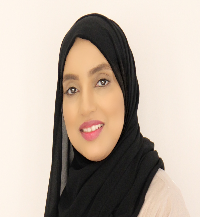
Biography:
Muna Said Alshekaili has completed her Fellowship in Child and Adolescent from NGHA in 2014 and has completed her OMSB Certificate in 2012. She has presented in many local conferences about child abuse in general and child sexual abuse in specific.
Abstract:
When a child is forced or encouraged to be a part of sexual activity, this is called child sexual abuse. There are two different types of child sexual abuse which are the contact abuse and non-contact abuse. The contact abuse when it involve touching activities, where the perpetrator makes a physical contact with the child. The second type is when non touching sexual activities are involved like sexual grooming or even showing the child pornography. Many times the child will not be able to understand what is happening with them is wrong and they have to inform their parents or care giver and this activity can affect the child whole life. In our country there is 299 case of abuse reach to child protection team from different types of abuse and 72 case of sexual abuse and there is 118 cases of child sexual abuse reached to public persecution in 2016 from all different governorates in the Sultanate with variety of age, sex and nationalities which makes us reach to conclusion of every child at risk. Most of the researches worldwide give picture that abuser mainly from the people that the child know and trust unfortunately and its almost the same in our country as there was a 38% from the relative, 36% from care givers like housemaids, drivers, teachers and supervisors. From all the cases 42% were females. Many signs are considered to be a warning signs for sexual abuse like acting out in an inappropriate sexual way with toys or objects, nightmares, sleeping problems, becoming withdrawn or very clingy, becoming unusually secretive, sudden unexplained personality changes, mood swings and seeming insecure, regressing to younger behaviors, e.g. bedwetting and many more. In our clinic we have been dealing with many cases of sexual abuse with positive outcomes. We used to deal with those children by many different ways like play therapy and drawing. It is everybody’s responsibility to report and notice child sexual abuse as early as it can be to reduce the negative consequences of this abuse.
- Pediatric Infectious diseases
Session Introduction
Alemayehu Girma Tessema
Adama Medical College, Ethipoia.
Title: Immuno-virological response to ART in children below 15 years in Adama Referral Hospital, Oromia region, Ethiopia
Biography:
Alemayehu Girma Tessema is Paediatrician and Assistance Professor at Adama Medical College, Ethipoia.
Abstract:
Background: Introduction of antiretroviral therapy (ART) in sub-Saharan Africa was a hot debate due to many concerns about adherence, logistics and resistance. Currently, it has been significantly scaled up. However as the WHO clinico-immunological approaches for initiation and monitoring of ART in the region lacks viral load determination and drug resistance monitoring, HIV infected children may be at risk for unrecognized virologic failure and the subsequent development of antiretroviral drug resistance.
Aim: To evaluates the virological efficacy and immunological recovery of HIV/AIDS pediatric patients <15 years of age on ART.
Methods: A cross-sectional study was conducted on pediatric patients taking ART at Adama Hospital between February 2011 and October 2013.
Results: Total of 100 children age <15 years of age who started ART during February 2011 and October 2013 was analyzed. Female were 50% with mean age at the start of ART 87.79±41.35 months and median duration on ART was 21.24 months (SD=10.860). The mean CD4+T cell count was 521.04 cells/mm3 (SD=311.118), 698.84 cells/mm3 (SD=400.545), 851.94 cells/mm3 (SD=576.808), 872.13 cells/mm3 (SD=637.627) at 6 months, 12 months, 24 months and 36 months after initiation of ART, respectively. Virological failure (HIV RNA≥1000 copies) was found in 24% of patients. Virological treatment failure (HIV RNA copies ≥1000 copies) was commonly found on 18 males. Significant association was observed between virological treatment failure and duration of months on anti-retroviral treatment (p-value=0.028).
Conclusion & Recommendation: Having adherence level <95%, male sex, longer duration on ART was found to be the independent risk factors for virological treatment failure. The virological treatment failure was seen in clinically stable patients. Based on above data inclusion of routine virological monitoring is the most important follow up parameter for patients on ART to detect early treatment failure and strict counseling and assessment of adherence to anti-retroviral therapy should have to be done for patients on treatment.
- Pediatric Cardiology
Session Introduction
Layla Taryam
Sharjah University Medical School, UAE
Title: StethAid: A mobile platform for smart auscultation
Time : 15:05 am-15:35pm
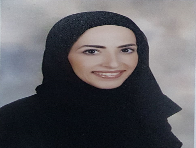
Biography:
Layla Taryam has completed her graduate degree from the UAE University Medical School. She has trained in Pediatrics at Koln University Hospital in Germany where she continued to specialize in neonatology. She has been practicing in Al Qassimi Hospital and specialized in the care of critically ill neonates. Her interests include early diagnosis of congenital heart diseases in the newborns and pediatric patients. Currently she is a Clinical Associate Professor of Medicine at Sharjah University Medical School and a Coordinator of the Internship Program in MOHAP. She is also a member of multiple medical committees in MOHAP.
Abstract:
Innocent heart murmurs occur in approximately 50% of healthy children at some point in their childhood and Still’s murmur is the most prevalent of these innocent pediatric heart murmurs. General physicians (GPs) are not very successful in distinguishing innocent Still’s murmur from pathological heart murmurs and consequently, a large number of children are unnecessarily referred to pediatric cardiologists. Besides cost and inconvenience, these unnecessary referrals are a source of anxiety and stress in children and families while waiting to see a pediatric cardiologist. Our objective has to develop a novel technology that could identify Still’s murmur with high accuracy at the point of care to aid GPs in their decisions regarding referral to a specialist. We have created a novel stethoscope that connects to a smartphone and developed a custom application that records heart sounds and analyzes them for the presence of Still’s murmur. This solution is called StethAid. The stethoscope records heart sounds with a quality comparable to that of a commercial electronic stethoscope. The analysis algorithm has been developed and tested using an in-house murmur library with clinically documented diagnoses. Using StethAid we recorded heart sounds of 78 pediatric patients at the two UAE Ministry of Health and Prevention Hospitals. Four of these patients had Still’s murmur, while the rest had a pathological murmur. The app identified these murmurs with over 90% accuracy. The proposed technology could potentially lower the current high rate of specialist referrals associated with Still’s murmur and reduce the related financial and emotional costs.

Biography:
Abdullah Alwabari has completed his MBBS degree in 1994, FRCS in 1999 from McMaster University and Fellowship in 2004. He has been working as a Pediatric Consultant and Laparoscopic Surgeon since 2004. He has published more than 15 papers.
Abstract:
Wilms tumor is the second commonest extra cranial tumor. The incidence is estimated to be 7 million. The mean age of presentation is 36 months. It has tendency to invade vessels in 4 to 10%. It usually presents with painless abdominal mass. Treatment has been standardized. We present two cases of Wilms tumor with ICV (inferior vena cava) tumor thrombus stressing the preoperative treatment and detailed surgical approach and postoperative care. This study is to draw the attention of pediatric surgeons and oncologist to the importance of early recognition and special management.
- Pediatric Surgery
Session Introduction
Rodrigo Hipolito Cifuentes
Hospital Infantil Privado, Mexico
Title: Electrical stimulation therapy of the lower esophageal sphincter in treating gastro-esophageal reflux disease in children, open label prospective trial
Biography:
Rodrigo Hipolito Cifuentes has completed his studies in pediatrics at the Hospital Infantil de Mexico. He is the Head of service of Pediatric Endoscopy at Hospital Infantil Privado.
Abstract:
Background: Electrical stimulation therapy (EST) of the lower esophageal sphincter (LES) is a new treatment for Gastro-esophageal reflux disease (GERD) that has been used in adult patients, in this paper we describe the first three cases in children with GERD, treated with EST. This device improves the pressure of the LES without interfering with its relaxation. Our aim is to describe the first three cases in pediatric population in the world with the use of ENDOSTIM, shows an alternative in the treatment of GERD by electrical stimulation.
Methods: Three patients with GERD, chronic pain, semi choking episodes, regurgitation that didn´t respond to proton inhibitors, abnormal esophageal pH, hiatal hernia less than 3 cm, Los Angeles grade C esophagitis by endoscopy, chronic esophagitis by acid reflux reported by pathology, abnormal pressures in esophageal manometry.
Results: We included 3 patients with GERD with the following criteria, pH, manometry endoscopy follow up 1, 3, 6 and 12 postsurgical months.
Patient-1: comorbidity, MODY diabetes, Bud Chiari syndrome , baseline, symptoms daily, pH Demeester index 68.5, manometry 14.7 mmHg, endoscopy (esophagitis) grade C, medication daily, 12th month follow up symptoms absent, pH Demeester index 9, manometry 23 mmHg, endoscopy normal, medication none.
Patient-2: comorbidity, down syndrome, heart disease corrected at birth, low weight, baseline, symptoms daily, pH 95% reflux cough and blench, manometry 14.7 mmHg, endoscopy (esophagitis), grade C, medication daily, 12th month symptoms absent, pH 0% reflux, manometry 16 mmHg, endocopy normal, medication none.
Patient-3: comorbidity, down syndrome heart disease corrected at birth, lox birth, diaphragmatic paralysis corrected, low weight, recurrent pneumonias, baseline symptoms daily, pH 95% reflux, cough, manometry 14.7 mmHg, endoscopy (esophagitis) grade C, medication daily, 6th month, symptoms absent, pH 0% reflux, manometry 16 mmHg, endoscopy normal, medication none.
Conclusion: The results show that electrical stimulation of the LES can improve symptoms of GERD, reduce esophageal acid exposure by augmenting esophageal sphincter pressures and reduce the need for PPI medication without Gastro esophageal side effects typically seen with other anti-reflux procedures that involve mechanical alteration of the gastro-esophageal junction.
- Pediatric Oncology
Session Introduction
Mukovhe Chad Phanguphangu
Fort Hare University, South Africa.
Title: High incidence of cisplatin-induced ototoxicity in pediatrics in Johannesburg, South Africa
Biography:
Mukovhe Chad Phanguphangu has completed his Master’s and Doctoral degrees in Pediatric Audiology from the University of Cape Town, Faculty of Health Sciences. He is the Chief Audiologist at Frere Provincial Hospital and Lectures at Fort Hare University. He has published 11 papers in peer reviewed journals and has presented his research work in 5 international congresses across three continents.
Abstract:
Cisplatin, a highly effective chemotherapeutic is associated with high incidences of ototoxicity. This cross-sectional retrospective study documents the incidence of cisplatin-induced ototoxicity in pediatrics utilizing data obtained during ototoxicity monitoring of a total of 196 pediatric patients who underwent cisplatin chemotherapy in Johannesburg, South Africa, between January 2015 and December 2016, through conventional audiometry, extended high frequency audiometry and distortion product otoacoustic emissions (DPOAEs). Descriptive and inferential statistics were used for data analysis. 12% of the participants did not develop ototoxicity during treatment. 84% of the participants developed hearing loss of varying degrees during treatment. Additionally, 4% presented with delayed onset of hearing loss detected at 6-weeks post-treatment. While 60% of participants presented with profound SNHL, 12% had a moderate to severe high frequency sensorineural hearing loss and 12% had a SIOP grade 4 ototoxic shifts in the extended high frequency range. Diminished DPOAEs were observed in 92% of the participants. Only 66% of the participants were diagnosed with ototoxicity using conventional audiometry. 3% of the participants presented with mixed hearing loss while 4% had conductive hearing loss. In addition, 78% of the participants presented with chronic cerumen impaction throughout the course of chemotherapy. High pitched tinnitus was reported in 56% of the participants. This study highlights a high incidence of cisplatin-induced ototoxicity in pediatrics and thus recommends prospective studies in oto-protection to prevent the negative impacts of cisplatin-induced hearing loss in pediatrics.
